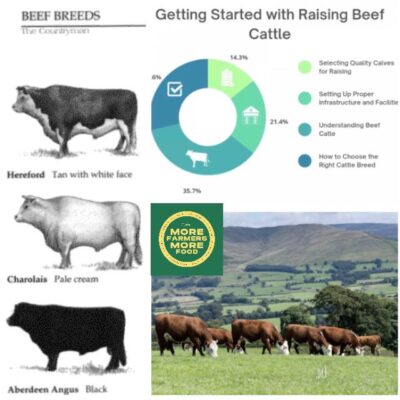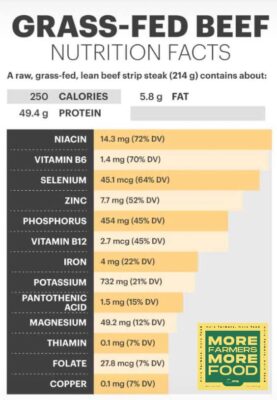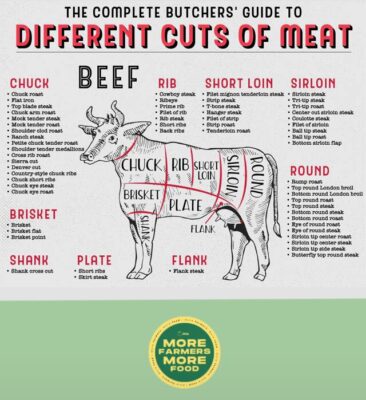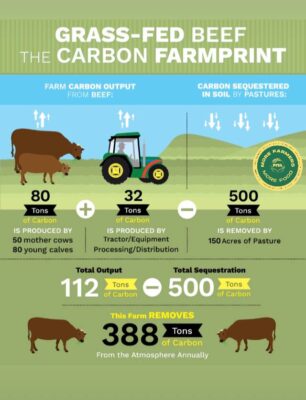On the 8th week of More Farmers More Food campaign we are discussing beef cattle farming.
In this Article...
Raising beef cattle can be good for our health and good for the environment.
Today where cattle farming and agricultural self-sufficiency are increasingly vital, the art of raising healthy beef cattle has become a cornerstone skill for modern farmers.

Raising healthy beef cattle plays a pivotal role in the agricultural industry. Selecting the appropriate breed is crucial to the success of the farm. The health of calf/cattle plays a vital role in its growth and development. Pasture grazing is an integral part of cattle farming and rotational grazing systems are key, although supplementary feeding is used too.
Modern beef farming techniques use technology to track data and information for the management of cattle.
A sturdy barn, secure and well-maintained fencing plus investment in appropriate feeding equipment is required to efficiently manage beef cattle.
Cattle are domesticated bovine farm animals that are raised for their meat, milk or hides. Other countries have domesticated buffalo and bison too.
The use of animals as commodities has been a point of philosophical contention, particularly using them for food. This is compounded by concerns about the ethics of intensive animal farming.
The male starts as a bull calf and if left intact remains a bull. If castrated, he becomes a steer and after 2/3 years becomes an ox.
The female is first a heifer calf, growing into a heifer and then becoming a cow.
All modern domestic cattle are believed to belong to the species Bos Taurus or Bos Indicus. Most cattle are of recent origins and have been selectively bred to possess distinctive size, conformation and function.
A lot of the British old established breeds are used in continental Europe as they have built up vast herds that supply so much beef and dairy around the world.
A generation or two ago beef was viewed as a nutritious, healthy food. Today’s opinions are very much divided between whether beef is healthful or harmful.

Let’s look at the benefits of this red meat. The exact nutrient values will depend on the cut of meat.
Beef is a rich source of protein, phosphorous, iron, B vitamins, zinc and selenium. It also provides a large source of L-carnitine which is a health promoting compound that the body synthesises in the liver from the amino acids lysine and methionine. It’s important as it plays a role in fat metabolism. It transports fats into our mitochondria where we burn them. It seems to have a positive impact on various health markers.
Beef provides glutathione which is known as the master antioxidant. It’s a key player in the immune system helping to protect every cell in our body from cellular damage. Maintaining sufficient glutathione levels is important for human health.
Beef is high in protein, packed with amino acids and is one of the most complete sources of protein in the human diet. Protein is essential for optimal health, especially as we age. It provides an abundant amount of this macronutrient.
Iron deficiency anaemia is a growing epidemic around the world. According to data 1.62 billion people suffer from it worldwide. Beef contains heme iron which is more bioavailable and easier for our bodies to absorb compared to non heme iron, which is found in plant foods.

Beef and red meat are the best dietary sources of carnosine, which helps boost the immune system and reduce inflammation.
Beef is a great source of B12, conjugated linoleic acid and creatine, which are important for human health.
In the UK we need to reduce our food waste, change our diets to eat seasonally and locally plus address the issue of over-consumption of intensively reared meat. The intensive systems and large-scale production shoulder much of the blame for the environmental destruction of the land.
The way in which livestock is farmed has a huge impact on the way farm animals affect the environment. Grazing cattle on independent organic and agroecological farms can actually help the climate by locking more carbon into the soil. By demonstrating climate-friendly livestock farming practices, the animals can be managed in a sympathetic way that supports the land.




